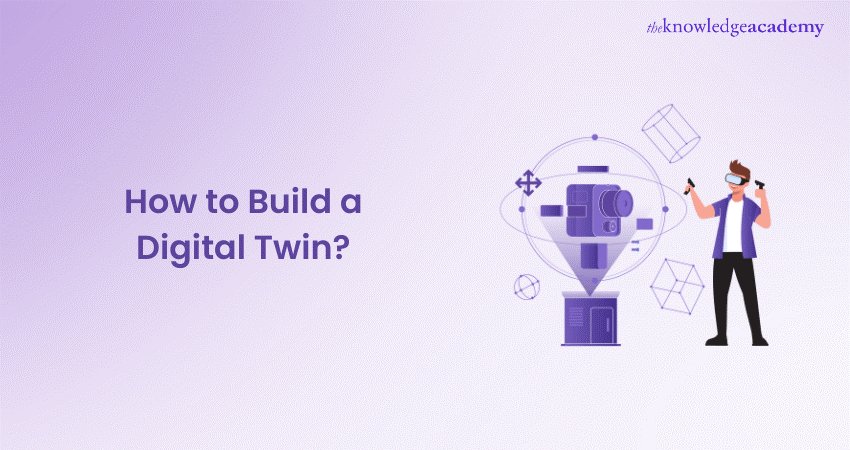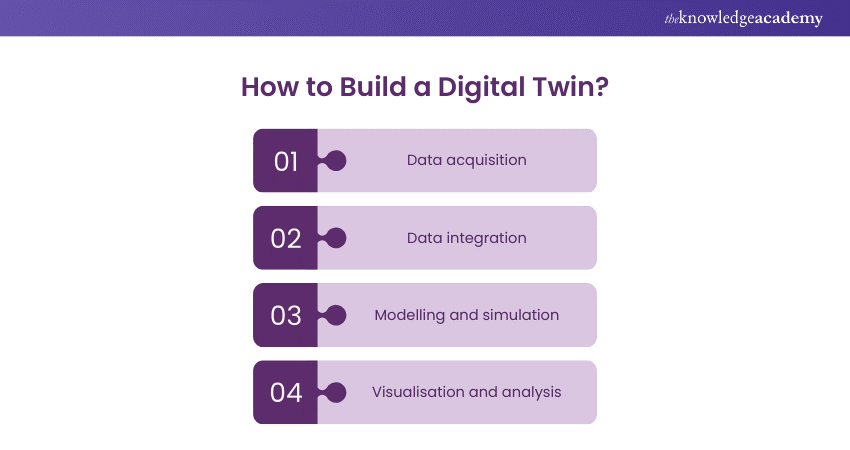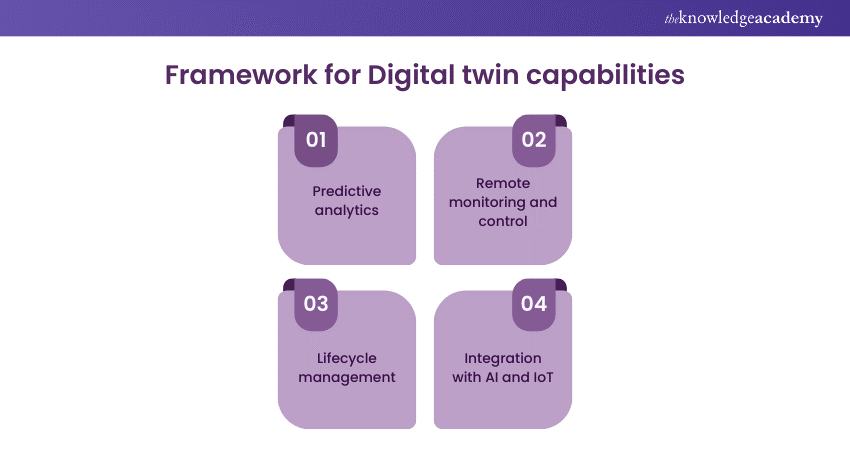We may not have the course you’re looking for. If you enquire or give us a call on + 1-866 272 8822 and speak to our training experts, we may still be able to help with your training requirements.
Training Outcomes Within Your Budget!
We ensure quality, budget-alignment, and timely delivery by our expert instructors.

Have you ever wondered how to create a digital version of something real? That's exactly what we'll explore in this guide on How to Build a Digital Twin! Imagine having a virtual copy of a physical object or system with the ability to analyse, monitor, and improve it digitally. In this guide, we will break down the process into simple steps to help you build your own Digital Twin. Let's dive in!
Table of Contents
1) What is a Digital Twin?
2) How to Build a Digital Twin
3) Framework for Digital Twin capabilities
4) Conclusion
What is a Digital Twin?
A Digital Twin is a virtual representation or duplicate of a physical object, process, system, or even living organism. It's essentially a digital counterpart that mirrors the real-world entity in a virtual environment. This Digital Twin is created using various data sources, such as sensors, IoT devices, and simulations, to gather information about the physical entity's characteristics, behaviour, and performance.
The concept of Digital Twins originated in the field of manufacturing, particularly in industries like aerospace and automotive. These industries have complex systems and components that could be replicated and analysed digitally before being physically produced. However, the use of Digital Twins has now expanded to various sectors, including healthcare, transportation, energy, and urban planning.
How to build a Digital Twin
Now that we understand what a Digital Twin is, let's explore How to Build a Digital Twin. The process involves several key components. The process typically involves several key steps:

1) Data acquisition: Gather relevant data from sensors, IoT devices, and other sources connected to the physical system.
2) Data integration: Integrate the collected data to create a comprehensive digital model that accurately reflects the physical counterpart.
3) Modelling and simulation: Develop algorithms and simulation techniques to mimic the behaviour and interactions of the real-world system.
4) Visualisation and analysis: Implement tools for visualising the Digital Twin and analysing its performance, enabling informed decision-making.
By following these steps, you can construct a robust Digital Twin that serves as a powerful tool for understanding, optimising, and innovating physical systems.
Transform your industry expertise with our Digital Twin Course. Sign up today!
Framework for Digital Twin capabilities
Once you have built your Digital Twin, the journey doesn't end there. To unlock its full potential, consider leveraging frameworks to enhance its capabilities:

1) Predictive analytics: Utilise advanced analytics and machine learning algorithms to forecast future behaviours and trends.
2) Remote monitoring and control: Enable remote monitoring and control functionalities to manage the physical system efficiently from anywhere.
3) Lifecycle management: Implement strategies for managing the entire lifecycle of the Digital Twin, from creation to decommissioning.
4) Integration with AI and IoT: Integrate artificial intelligence and Internet of Things technologies to enrich the Digital Twin's functionality and insights.
By embracing these frameworks, you can elevate your Digital Twin from a mere replica to a transformative asset driving innovation and efficiency.
Explore the future of technology with our Introduction to Virtualisation Technologies Course. Join now for advanced skills and hands-on expertise!
Conclusion
Building a Digital Twin opens up a world of possibilities for understanding and optimising real-world objects and processes. By following the steps outlined in this guide on How to Build a Digital Twin, you can create a virtual replica that provides valuable insights, predictions, and optimisations. Whether you are in manufacturing, healthcare, transportation, or any other industry, embracing Digital Twins can lead to innovation, efficiency, and competitive advantage. So, don't hesitate to explore this technology and utilise its potential to take your business to success.
Explore cutting-edge technologies with our Advanced Technologies Courses for a future-ready skill set. Elevate your expertise today!
Frequently Asked Questions

Digital Twins were not invented by one person but rather evolved over time as technology advanced. They first appeared in manufacturing, especially in industries like aerospace and cars. However, the term "Digital Twin" was popularised by Dr. Michael Grieves, a researcher at the University of Michigan, in the early 2000s.

Digital Twins usually have 3D models, but they're more than just that. They're virtual copies of real things, like objects or systems. Digital Twins also use other kinds of data, such as sensor readings and simulations, not just 3D pictures. So, while 3D models are common in Digital Twins, they're not the only thing that's important.

The Knowledge Academy takes global learning to new heights, offering over 30,000 online courses across 490+ locations in 220 countries. This expansive reach ensures accessibility and convenience for learners worldwide.
Alongside our diverse Online Course Catalogue, encompassing 17 major categories, we go the extra mile by providing a plethora of free educational Online Resources like News updates, Blogs, videos, webinars, and interview questions. Tailoring learning experiences further, professionals can maximise value with customisable Course Bundles of TKA.

The Knowledge Academy’s Knowledge Pass, a prepaid voucher, adds another layer of flexibility, allowing course bookings over a 12-month period. Join us on a journey where education knows no bounds.

The Knowledge Academy offers various Advanced Technologies Courses, including Reverse Engineering courses, Virtual Reality training and LTE Fundamentals training. These courses cater to different skill levels, providing comprehensive insights into Advanced Technologies.
Our Advanced Technology Blogs cover a range of topics related to Digital Twin, offering valuable resources, best practices, and industry insights. Whether you are a beginner or looking to advance your skills as a Music Producer, The Knowledge Academy's diverse courses and informative blogs have you covered.
Upcoming Advanced Technology Resources Batches & Dates
Date
 Virtual Reality (VR) Training
Virtual Reality (VR) Training
Fri 17th Jan 2025
Fri 21st Feb 2025
Fri 4th Apr 2025
Fri 6th Jun 2025
Fri 29th Aug 2025
Fri 24th Oct 2025
Fri 26th Dec 2025







 Top Rated Course
Top Rated Course



 If you wish to make any changes to your course, please
If you wish to make any changes to your course, please


